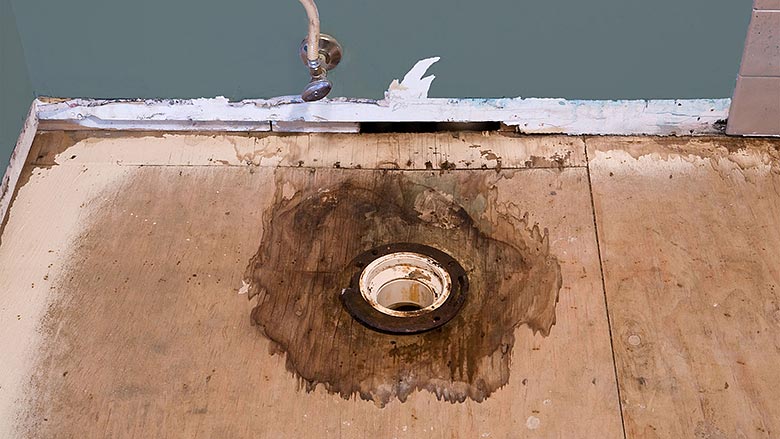How do you actually feel in relation to Common Causes of Water Damage in a Bathroom?

The washroom is incredibly at risk for damp build-up and also prospective water damages due to the frequent use water in it. This short article uses simple assessment strategies to assist finding water damages risks.
The regular use water in the restroom makes it exceptionally vulnerable for damp build-up and also potential water damage. By checking it regularly, you can decrease water associated problems.
The adhering to set of assessments is very easy to perform and should be done when in every 3 months in order to maintain your bathroom in good shape as well as to stop potential water damages caused by the tub, the shower, pipe joints and also plumbing, sinks, closets, and the toilet
Do not neglect carrying out these assessments and also be detailed while executing them. Remember that these simple inspections can save you a lot of money by offering early indications for water damage
Sinks as well as Cabinets
Sinks and cupboards are revealed to dampness and also moisture day-to-day as well as are commonly ignored. Evaluate consistently under the sink as well as on the kitchen counter over it. Fix any kind of drip in the catch as it might recommend drainpipe problems. Take a look around the sink, sluggish draining pipes may suggest an obstructed drainpipe. Replace sink seals if they are broken or loose.
Bath tub and also Shower
The shower and bathtub call for unique focus and also upkeep. Inspect the ceramic tiles as well as replace if cracked. Make sure that there is no missing out on cement between the tiles. Evaluate and also change split caulking at joints where the walls meet the flooring or the bathtub. Obstructed drains pipes as well as pipes problems will certainly stop the tub from drying and also might suggest major problems beneath the bath tub. Talk to an expert right away to prevent architectural damages. Take note of discolorations or soft locations around the tub walls as they might show an interior leak.
Plumbing
Signs for water damages are hard to detect given that a lot of pipes are mounted inside the walls.
Pay special focus to flooring and wall surfaces wetness and also spots as they may indicate an undetectable plumbing problem. Inspect moisture degrees in adjoining areas also.
The Toilet
The bathroom is an at risk water junction. Examine the water lines and look for leaks around the bathroom seat, in the tube, as well as under the water container. If you spot any type of indicators of wetness on the flooring around the toilet, check for leakages in the toilet rim and storage tank seals.
Be aware that hanging bathroom dish deodorants boosts the chances for blockages.
TIPS TO PREVENT WATER DAMAGE IN THE BATHROOM
The average household uses approximately 80-100 gallons of water per person per day. For a family of 4, that's almost 2,500 gallons of water a week! The largest portion of this consumption comes from bathroom use. Flushing the toilet uses the most water, followed by taking a shower or bath. With that much water running through the home, water damage in the bathroom is bound to happen. Knowing how to spot signs of a water leak is essential to preventing long-term damage. This guide provides you with tips to reduce the impact of water damage on your bathroom.
CAUSES OF BATHROOM WATER DAMAGE
Pipe breaks are the most common cause of water damage we see in our daily jobs. The age of a pipe plays a large role in a pipe break as well as corrosion. Over time, the metal begins to break down, allowing water to escape. Frozen pipe breaks are also a concern in the winter months. Toilet overflows caused by paper products or children flushing inappropriate items. Degraded caulking around the toilet or bathtub can allow water seepage, sometimes behind the fixture, into the subfloor or walls. Condensation forms when the water in a pipe is cooler than the air temperature. Beads of water form on the exterior of the pipes, sometimes so much so that the water begins to drip and pool below. Sink or shower backups created by poor drainage. HOW TO PREVENT WATER DAMAGE IN YOUR BATHROOM
Inspect your toilet supply line for worn or frayed hoses and replace them as needed. Winterize your plumbing to prevent a frozen pipe break. Use vent fans to prevent condensation that can lead to mold growth. Routinely check and replace degraded caulking around your toilet or bathtub. Increase the temperature in your toilet tank and insulate your pipes during the warm summer months to keep condensation from forming. Use child safety locks on the toilets. Flush only toilet paper. "Flushable" wet wipes are actually not good for your plumbing system. Additionally, feminine hygiene products should not be flushed. Prevent water from escaping the tub or shower. Make sure shower curtains are in good condition. Inspect shower doors and replace the seal strip if necessary. Wipe up any water that accumulates on the floor and use bath mats. Water left to sit can cause damage to the tiles and flooring. Refrain from using bath products containing heavy oils to avoid a clogged drain.

Do you really like reading up on How to Fix a Water Damage Bathroom? Try leaving a short review down below. We'd be delighted to see your suggestions about this blog. Hoping that you come back again in the future. Sharing is good. Helping others is fun. Thanks for going through it.
Phone